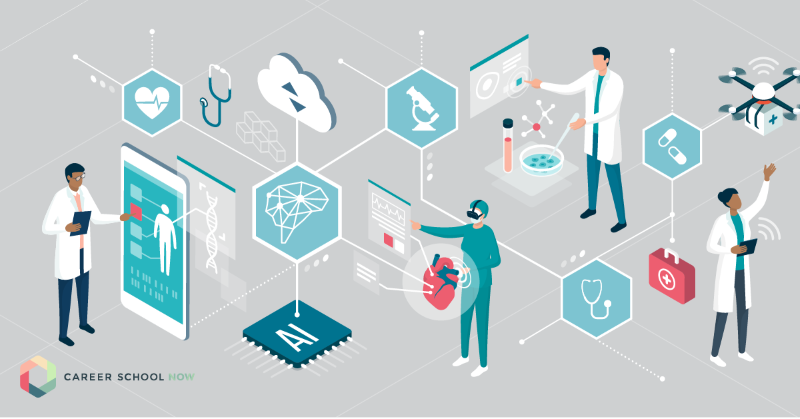Ideal Practices in Medical Management for Improving Effectiveness and Decreasing Expenses
In the ever-evolving landscape of health care, the search of finest practices in clinical administration is critical for boosting effectiveness and curbing expenditures. By integrating advanced modern technologies such as electronic wellness records and telemedicine, doctor can improve procedures and boost client care. Technology alone is not a remedy; maximizing source allowance and fostering collective interaction amongst care groups are equally vital. As companies make every effort to balance high quality and price, what techniques should be prioritized to accomplish these twin goals? The response to these inquiries hold the key to an extra lasting healthcare system.
Leveraging Advanced Technology
The combination of digital options into medical care systems has actually transformed the way facilities operate, simplifying procedures and improving patient treatment. By centralizing person info, EHRs eliminate the demand for troublesome paperwork and help with seamless communication amongst health care suppliers.
Telemedicine is one more technical development that has actually revolutionized individual interaction. It offers comfort for both people and medical care experts by enabling remote appointments, which can minimize the need for in-person visits and enhance appointment organizing. Additionally, telehealth systems can extend medical care access to country or underserved areas, connecting gaps in care distribution.
Additionally, using Artificial Intelligence (AI) and artificial intelligence is coming to be increasingly common in anticipating analytics, enabling early detection of prospective wellness issues and even more enlightened decision-making. These technologies, when integrated successfully, can boost diagnostic precision and individualize patient therapy strategies, inevitably leading to improved health care results and functional performance.
Optimizing Source Allowance
Reliable source allocation is critical for maximizing the performance of clinical management. By tactically managing sources such as employees, tools, and financial resources, healthcare centers can substantially boost their operational efficiency, enhance individual end results, and lower unnecessary expenses. The primary step in enhancing resource allowance involves conducting an extensive evaluation of present possessions and determining areas where resources may be underutilized or overextended. This assessment needs to be data-driven, using metrics and analytics to educate decision-making procedures.
Prioritizing resource appropriation based on client demands and service demands is vital. Applying versatile staffing versions can additionally optimize labor sources by changing personnel allocation in reaction to fluctuating patient quantities.
Funds must be meticulously kept an eye on and allocated with tactical insight to sustain both short-term operational requirements and lasting institutional objectives. This consists of investing in training programs that enhance staff proficiencies and embracing energy-efficient methods that decrease operational expenses (medical administration). Eventually, an enhanced resource allocation technique promotes a sustainable healthcare environment that is responsive, efficient, and financially prudent
Streamlining Workflow Processes
When healthcare centers aim to improve operational performance, enhancing operations procedures ends up being an essential emphasis. Effective process reduce redundancy, get rid of unnecessary steps, and improve control amongst health care specialists. This approach not just speeds up service delivery yet also boosts the top quality of patient care.

Next, innovation assimilation plays a considerable duty in streamlining process. Implementing electronic wellness records (EHRs) and electronic medical professional order entry (CPOE) systems minimizes documentation, minimizes human error, and makes certain information is easily accessible to all pertinent personnel. Additionally, leveraging telemedicine systems can simplify patient consultations and follow-ups, minimizing the pressure on physical framework.

Eventually, structured process bring about set you back decreases and improved patient complete this website satisfaction, promoting an extra lasting health care atmosphere.
Enhancing Data Management
Structure upon streamlined workflows, maximizing information management becomes an essential component website here beforehand health care administration. Effective data management systems are important for preserving accurate person documents, enhancing decision-making, and ensuring conformity with regulative standards. By executing robust data monitoring remedies, health care facilities can boost the high quality of individual care while at the same time reducing functional costs.
One trick element of enhancing information management is the assimilation of sophisticated digital wellness document (EHR) systems. These systems help with the smooth exchange of individual info across various departments, lowering duplication of examinations and minimizing mistakes. A well-designed EHR system supports information analytics, enabling medical care providers to determine trends and make notified choices concerning individual care.
Furthermore, guarding Clicking Here client information is paramount. Embracing thorough cybersecurity steps, consisting of encryption and routine audits, makes certain the integrity and privacy of delicate details. This not only secures patients yet also maintains the institution's online reputation.
Investing in personnel training is one more crucial aspect. Enlightening healthcare experts on data monitoring techniques boosts their ability to properly utilize innovation, causing boosted person outcomes. To conclude, boosting information management through advanced technology and extensive training is vital for accomplishing effectiveness and expense decrease in medical administration.
Fostering Collaborative Communication
A vital part ahead of time medical administration is promoting collective interaction among medical care specialists. Effective interaction is extremely important for guaranteeing smooth patient treatment, maximizing therapy end results, and reducing mistakes. By urging open discussion and sychronisation across multidisciplinary teams, health care companies can improve their operational efficiency and reduce unneeded prices.
Central to this technique is the combination of communication technologies such as digital wellness records (EHRs) and protected messaging platforms, which assist in the fast exchange of vital client information. These devices allow doctor to accessibility and share data in actual time, making sure that all employee are informed and aligned in their decision-making procedures. Normal team meetings and interdisciplinary rounds can further advertise a culture of collaboration and responsibility.
Educating programs concentrated on boosting interaction skills are additionally necessary. These programs can assist staff create the capability to share info plainly and listen proactively, therefore reducing misconceptions and promoting a supportive job atmosphere. Furthermore, taking on standardized interaction methods, such as SBAR (Situation, Background, Analysis, Suggestion), can streamline the exchange of info, making sure that critical details are communicated succinctly and properly. Ultimately, fostering collective interaction brings about improved healthcare shipment and expense savings (medical administration).

Conclusion
Integrating sophisticated technology, such as electronic health documents and telemedicine, along with enhanced source allocation and streamlined operations processes, is crucial for improving efficiency in medical administration. Effective data monitoring and fostering collective communication among healthcare groups are crucial for minimizing redundancies and boosting treatment top quality. By focusing on preventive care and participating in top quality improvement initiatives, health care companies can achieve considerable expense financial savings and enhanced client end results, thereby ensuring lasting health care distribution in a significantly intricate environment.